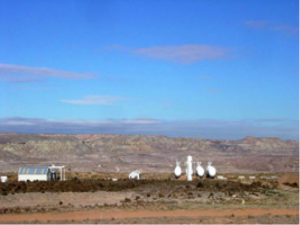Phase II – Validation
The Validation Phase of the RCSP effort (2005– 2009) focused on evaluating promising CO2 sequestration opportunities through a series of small scale field tests in the seven partnership regions. For the Validation phase, the SWP conducted five field tests—three geologic and two terrestrial—all at various stages of planning and execution. Each test was designed to validate the most promising carbon sequestration technologies and infrastructure concepts.
This field testing demonstrated the efficacy of proposed sequestration technologies to reduce or offset greenhouse gas emissions in the region. Risk mitigation, optimization of monitoring, verification, and accounting (MVA) protocols, and effective outreach and communication were additional critical goals of these field validation tests. The program included geologic pilot tests located in Utah, New Mexico, Texas, and a region-wide terrestrial analysis. Each geologic sequestration test site was intended to include injection of a minimum of ~75,000 tons/year CO2, with minimum injection duration of one year. These pilots represent medium-scale validation tests in sinks that host capacity for possible larger-scale sequestration operations in the future. These validation tests also demonstrated a broad variety of carbon sink targets and multiple value-added benefits, including testing of enhanced oil recovery and sequestration, enhanced coalbed methane production and a geologic sequestration test combined with a local terrestrial sequestration pilot. A regional terrestrial sequestration demonstration was also carried out, with a focus on improved terrestrial MVA methods and reporting approaches specific for the Southwest region.
More details can be found on the following pages:
Phase II Results Summary
Phase II Fact Sheet (PDF, 2 MB)
Phase II Final Report (PDF, 17 MB)
Paradox Basin, Utah – Enhanced Oil Recovery

Aneth EOR Field (Utah)
The Aneth oil field is located near Bluff, Utah and is one of the largest oil fields in the nation. This site is perfect for the EOR method. Because the oil field is located on Navajo Nation land, mineral royalties go to the Navajo nation and are utilized in many ways, including a scholarship fund.
